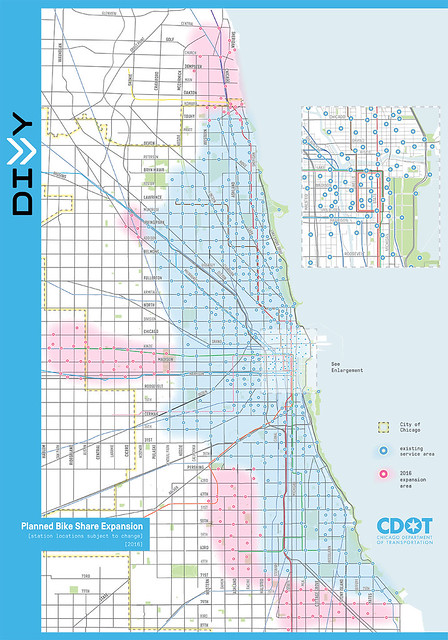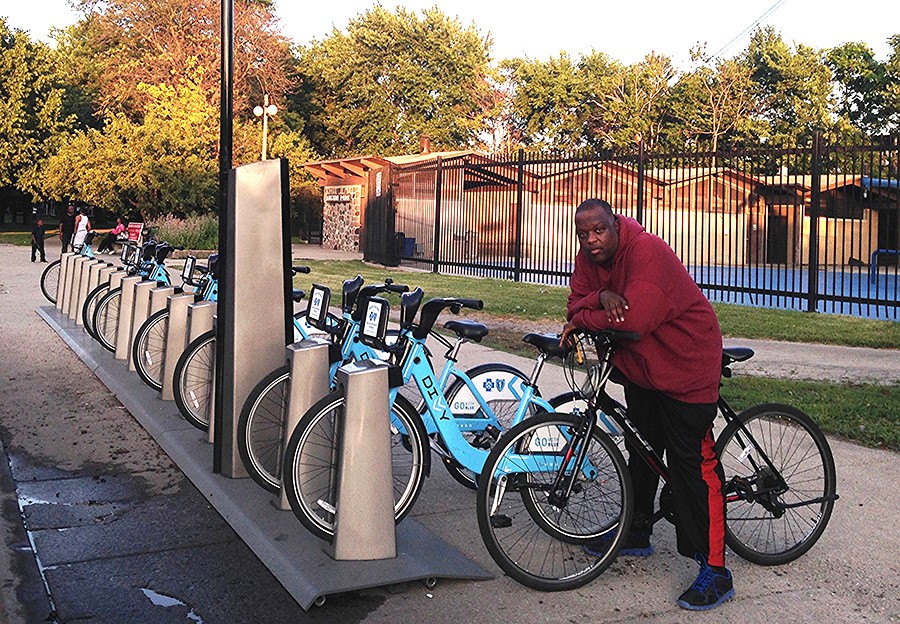While the Divvy system serves a large percentage of our city’s square mileage, as well as serving the suburbs of Evanston and Oak Park, it’s currently a lot more useful in some Chicago neighborhoods than others. That’s because when the system debuted four years ago, the Chicago Department of Transportation installed a higher number of stations in neighborhoods with a high density of people and destinations, mostly downtown and on the North Lakefront and Near Northwest Side.
Those areas generally got stations every eighth of a mile or better, while less dense parts of town, such as communities on the South and West Sides, usually got half-mile spacing, which means a longer walk to and from stations and destinations. As the system expanded to more outlying neighborhoods in subsequent years, this less-convenient half-mile spacing became the norm. Lower station density has been a factor in less Divvy use in these newer service areas.

Fortunately, at today’s Mayor’s Bicycle Advisory Council meeting CDOT deputy commissioner Luann Hamilton announced that the city will be adding 40 more stations and 400 more bikes to the system, and will largely be using the new hardware to increase density in communities with a dearth of Divvy. “Some of our newer areas don’t have quite the density that we have in other places,” Hamilton said. The expansion, which will grow the system to about 620 stations and 6,200 bikes, is being funded by a federal Congestion Mitigation and Air Quality Improvement grant plus Divvy revenue.
Some of the additional hardware will also be used to address the issue of bike and dock availability in high-use areas, such as the Loop, which is often largely devoid of Divvy cycles after the evening rush. “In other parts of the city where Divvy is really popular you have situations where there aren’t any available docks, or you can’t get a bike when you’re looking for one,” Hamilton said. “So at some locations we’re going to be adding plates with extra docks.”
The bike-and-dock order is expected to arrive in late summer and the transportation department hopes to install the extra stations by the end of the year. “We’re also going through the federal and state project development process, so we have to check off all the boxes before we get approval to go ahead with all the installations,” Hamilton said.
CDOT hasn’t release the new station location map yet. But hopefully special emphasis will be placed on increasing Divvy density and ridership in Chicago’s lower-income neighborhoods and communities of color, which stand to gain the most from the mobility, health, and economic benefits of cycling. The city has previous addressed this issue through the Divvy for Everyone (D4E) equity problem, which offers $5 annual memberships to Chicagoans making less than $35,310 a year. At the MBAC meeting the city announced a new D4E outreach program featuring ambassadors for the program who are Divvy employees.





